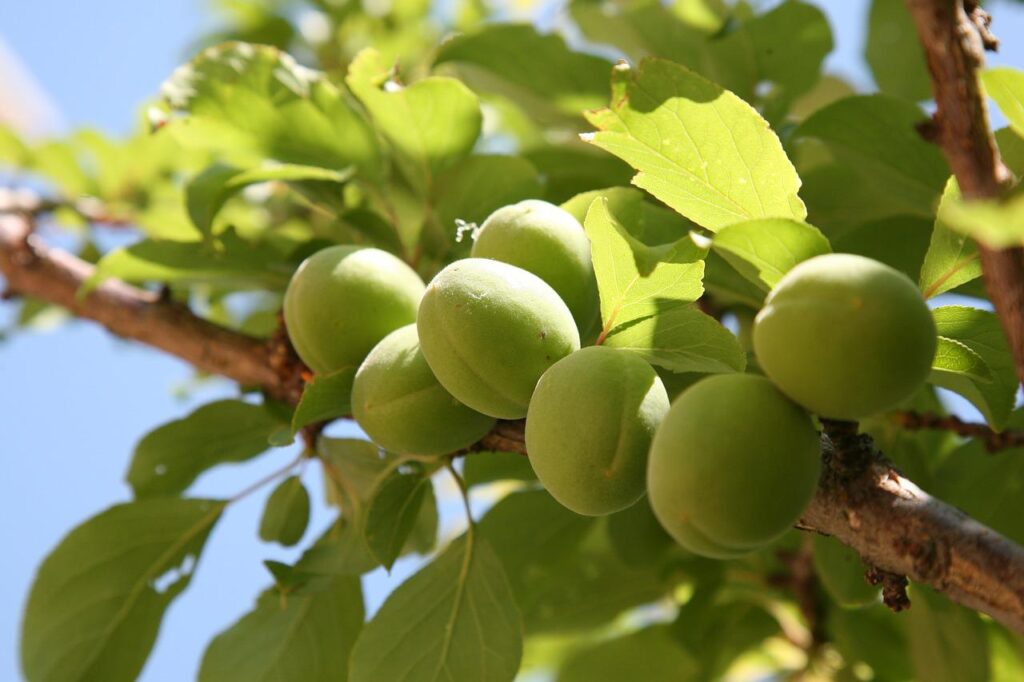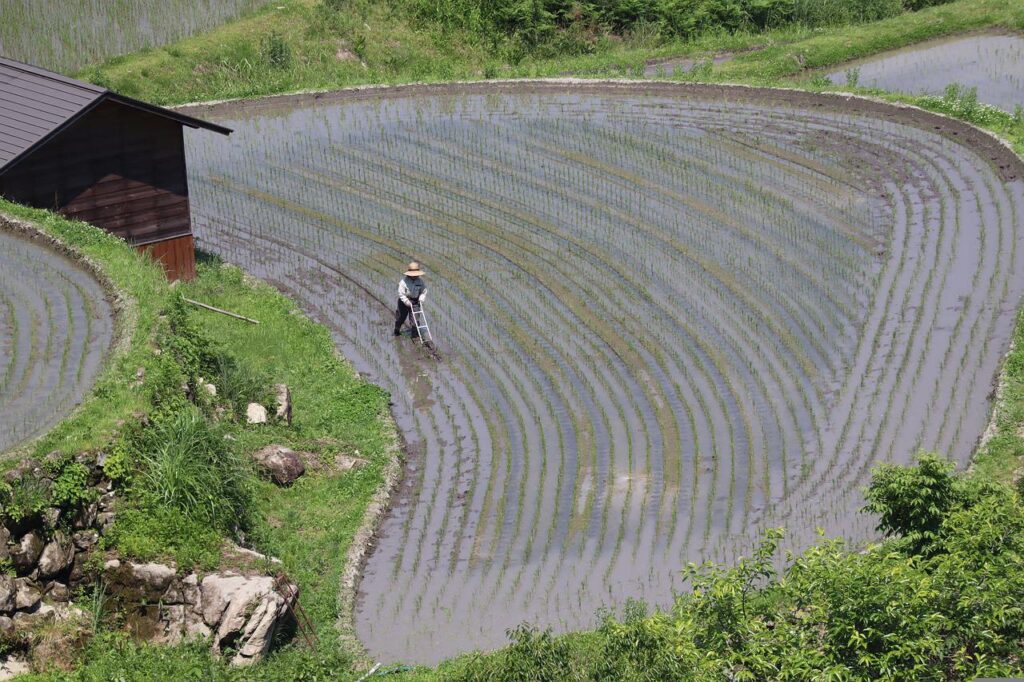It is the middle of May and there are days when it is sweaty. The Japanese apricot (I called them plum blossoms and tree(s) in the earlier articles.) fruits in the nearby park are almost big enough to harvest, and it will not be long before I will be making Japanese apricot syrup with Japanese apricot fruits and glacial sugar. In summer, we dilute the syrup with chilled sparkling mineral water to drink or put the syrup on shaved ice. All of my children love the syrup, so I am planning to use 6 kg of Japanese apricot fruits this year to make the syrup.

My hometown, Toyohashi, is very active in agriculture, with some vegetables and flowers boasting the highest production in Japan. It is not a famous rice-producing area, but many farmers finish planting rice-plant sprouts in May, just in time for the rainy season in June. There are many rice fields near my mother’s house, and when I drive at night with my car’s windows open, there is a great chorus of frogs.

Although rice plants can be grown by sowing seeds in a field, cultivation in a rice-paddy produces higher quality and volume, which gave rise to the tradition of wet-land rice. This process is called rice-cultivation, and its roots can be traced back to the Jomon period, spreading across all of Japan during the Yayoi period. The Japanese environment was not always suited for rice cultivation. It is thanks to the tireless efforts of the early pioneers of Japan that rice cultivation became possible.

According to the latest techniques, rice-plant sprouts, which have been partially raised in a seedling incubator or greenhouse, are planted in a rice-paddy using a rice planting machine. Periodically, weeds are removed and fertilizer and pesticides are sprayed. When the rice plants are fully ripe, a combine harvester is used to harvest the plants and separate the rice kernels from the chaff. The harvest usually takes place in September.

Since rice is the main staple of the Japanese diet, it is understandable that rice has deeply influenced Japan’s food culture. Near the end of the Muromachi Period, for the first time since the foundation of the Japanese diet had been laid down, a wide variety of methods for preparing and enjoying rice-based cuisine were created including mochi, rice porridge, onigiri, takikomi-gohan and sushi. Remember that sake is also made from rice! Not only is rice a facet of everyday life in Japan, it has also become the indispensable core of many traditional festivals and milestone events.

It might be interesting for you to come to Japan and compare several brands of rice. In case you are wondering, my favorite brand at the moment is Milky Queen. I buy it from my relatives in Toyohashi at a reasonable price.

